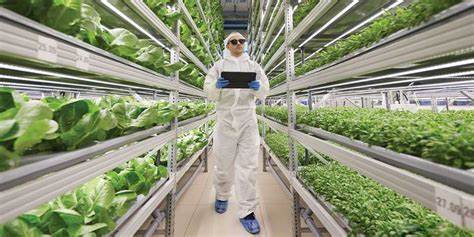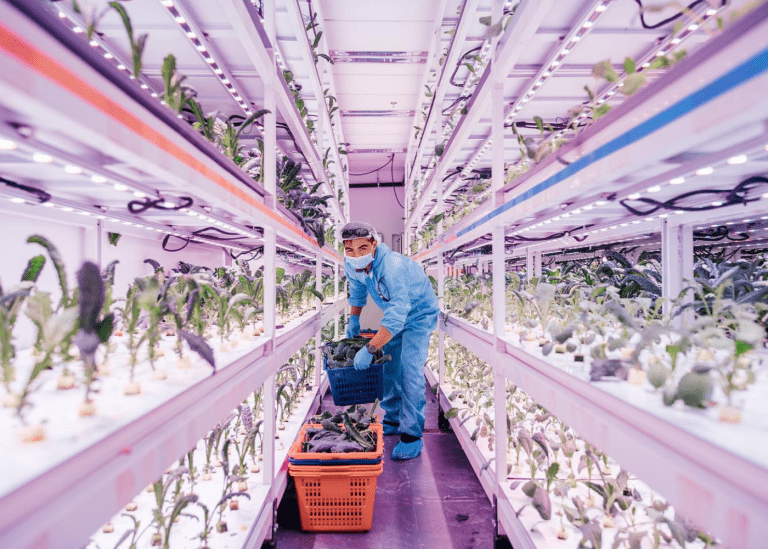
Vertical Farming: Shaping a Resilient and Sustainable Post-Pandemic Food System
Introduction
In a post-pandemic world, ensuring food security and sustainability has become a crucial concern. As traditional agriculture faces various challenges, the concept of vertical farming has gained traction. This article aims to explore the significance of vertical farming in the context of a post-pandemic food system and its potential to revolutionize food production.
Historical Background
Vertical farming has a rich history that dates back several decades. Initially, it emerged as a response to the increasing demand for food in urban areas with limited arable land. Over time, significant milestones and events have shaped the development of vertical farms, such as the introduction of hydroponics and the integration of cutting-edge technologies.
Key Concepts and Definitions
Vertical farming can be defined as a method of cultivating plants in vertically stacked layers, utilizing techniques like hydroponics, aeroponics, and controlled environment agriculture. It offers a promising solution for a post-pandemic food system, as it enables efficient use of limited space and resources, while reducing the dependence on traditional agricultural practices.
Main Discussion Points
The potential benefits of vertical farms in a post-pandemic food system are numerous. Firstly, vertical farms allow increased food production capacity within limited urban spaces. By utilizing vertical space, these farms can produce a significant amount of food without encroaching on valuable land. Secondly, vertical farms decrease dependency on traditional agriculture, which can be vulnerable to climate change, pests, and diseases. Lastly, vertical farms enhance food safety and traceability, as the controlled environment minimizes the risk of contamination and allows for detailed tracking of each crop.
The environmental advantages of vertical farms are significant. Vertical farming conserves land and water resources by maximizing productivity in a minimal footprint. It also reduces carbon emissions compared to traditional farming methods and decreases reliance on fossil fuels for transportation. Furthermore, vertical farms promote biodiversity and ecosystem preservation by eliminating the need for pesticides and creating self-contained ecosystems.

Case Studies or Examples
Successful vertical farming projects around the world serve as inspiring examples. Projects like AeroFarms in New Jersey and Sky Greens in Singapore have demonstrated the potential impact of vertical farming on local communities and food systems. These farms have significantly reduced the carbon footprint of food production and provided fresh, nutritious produce to urban areas.
Current Trends or Developments
Recent advancements in vertical farming technologies have emerged. Innovations in lighting systems, automation, and data analytics have led to the development of more efficient and productive vertical farms. Additionally, researchers have focused on improving the nutritional quality and crop yields of vertical farms, ensuring that they can meet the dietary needs of an expanding population.

Challenges or Controversies
While vertical farming offers numerous benefits, it also faces challenges and controversies. Concerns regarding energy consumption and sustainability have been raised, as vertical farms require significant amounts of electricity for lighting and climate control. Additionally, the economic feasibility and scalability of vertical farming remain areas of investigation, as the costs associated with initial setup and maintenance can be high. Trade-offs between productivity and ecological impact also need to be analyzed to ensure that vertical farming practices are truly sustainable.
Future Outlook
In the post-pandemic era, the growth and adoption of vertical farms seem promising. With emerging technologies and increased awareness of the benefits, vertical farming is poised to play a vital role in creating resilient and sustainable food systems. The integration of artificial intelligence, robotics, and vertical farming could revolutionize food production and help address the challenges faced by traditional agriculture.

Conclusion
Vertical farming presents an innovative solution for ensuring food security and sustainability in a post-pandemic world. Through increased food production capacity, reduced environmental impact, and enhanced food safety, vertical farms have the potential to shape resilient and sustainable food systems. By embracing emerging technologies and addressing existing challenges, vertical farming can contribute to a brighter future for global agriculture.
References
Despommier, D. (2010). The Vertical Farm: Feeding the World in the 21st Century. Macmillan.
Rojas-Sandoval, J., & Galindo, J. (2021). Vertical Farming: A Sustainable Agricultural Practice for Food Production. Frontiers in Sustainable Food Systems, 5, 607032.
Son, S., & Kim, K. (2019). Environmental Sustainability of Vertical Farming Systems. Journal of Cleaner Production, 228, 880-890.




